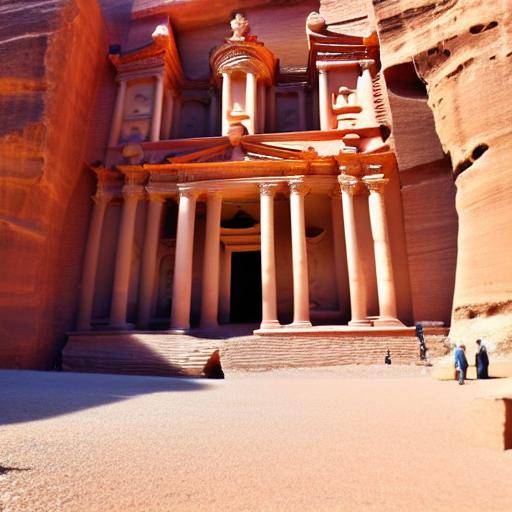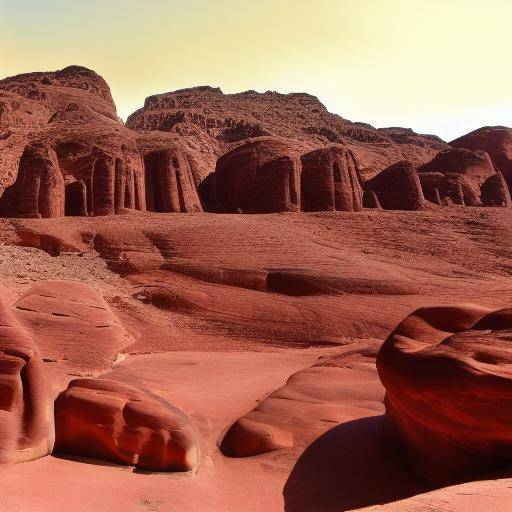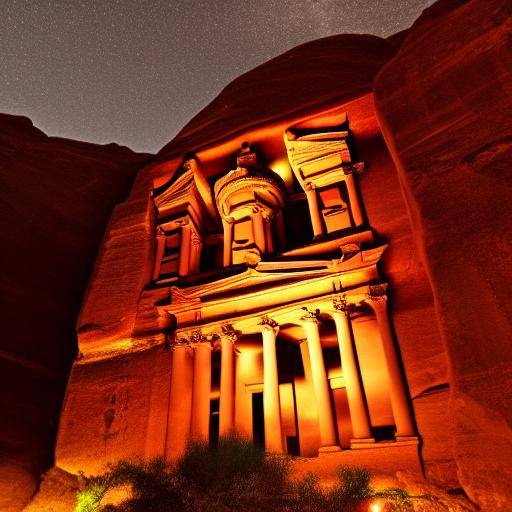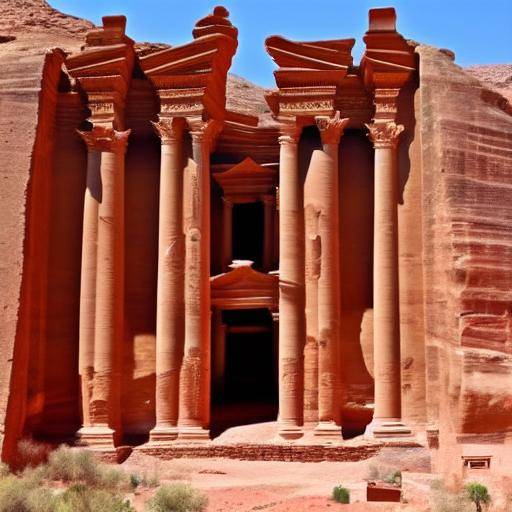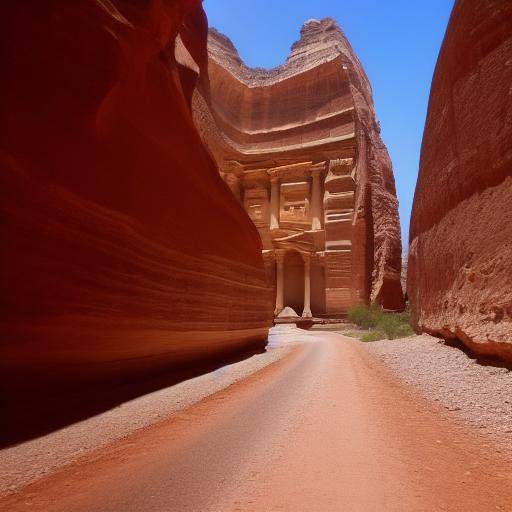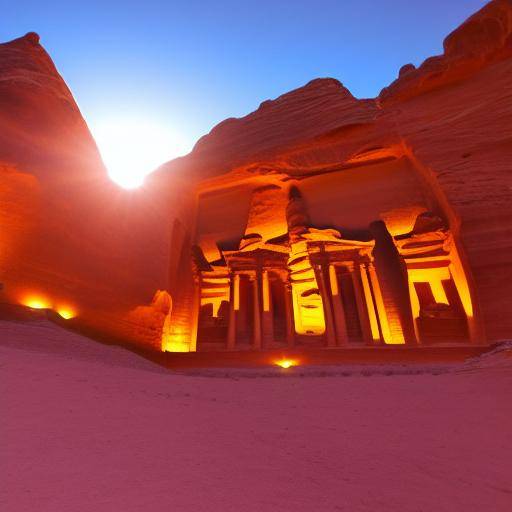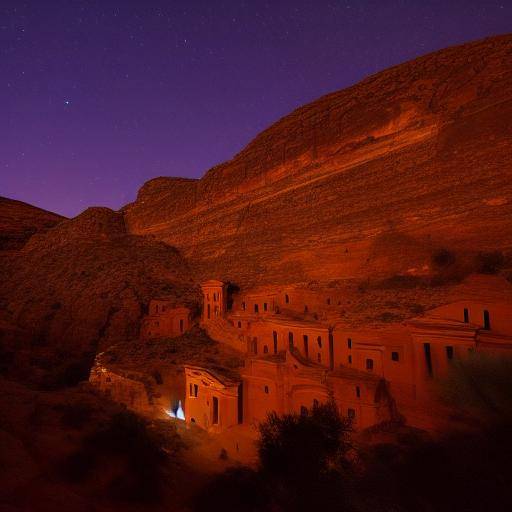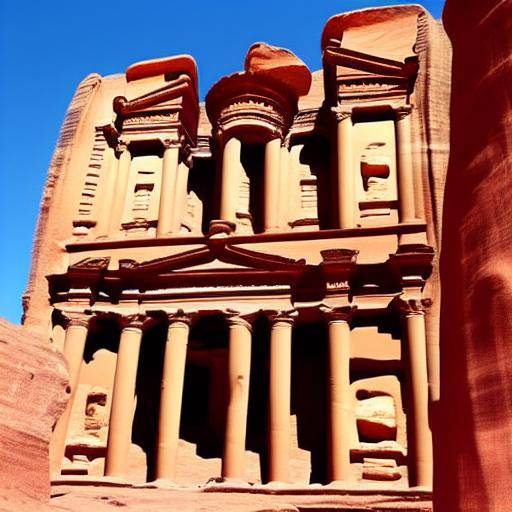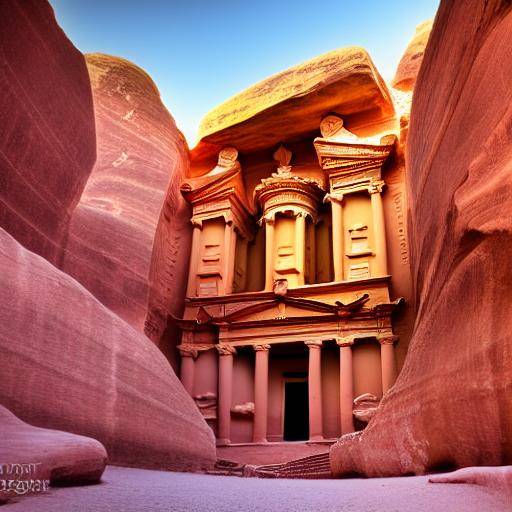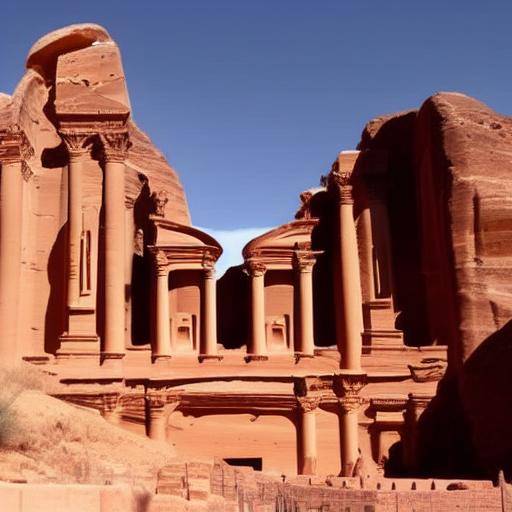
Through its enigmatic ruins, Petra invites us to take a journey in time to explore the remnants of the ancient Nabatean civilization. Considered one of the largest archaeological treasures in the world, Petra is a living testimony of Jordan's cultural and historical wealth. In this article, we will discover the cultural lessons that emanate from these impressive ruins, exploring their archaeology, history and mythology, plunging into an ancient world full of mystery and wonder.
Introduction
Petra, a mystical and legendary place, has captivated travelers, historians and archaeologists alike. Its imposing facades carved on the rock and its intricate hydraulic systems are testimony to the skill and sophistication of the Nabatean civilization. In this article, we will enter the depths of Petra to discover its cultural lessons, unraveling the history, mythology and archaeology of this fascinating enclave.
Origins and Historical Significance
An Ancestral Legacy
The ruins of Petra go back to the ancient Nabatean civilization, an Arab people who flourished in the region between the fourth century BC and II AD. Initially a thriving commercial city, Petra became the epicenter of a rich network of trade routes connecting the Far East, southern Arabia, Egypt and Syria. The monumental facade of the Treasury, carved in the pink rock by skilled Nebatian artists, is an icon of the greatness and architectural skill of this civilization.
A Testimonial of Past Civilizations
Petra, throughout his history, has witnessed the passage of different cultures and civilizations, from the Nabatites to the Romans and Byzantines. This diverse cultural legacy is reflected in the architecture, inscriptions and artistic influences that persist in the ruins.
Mythology and Mystery
The mythology surrounding Petra adds a layer of fascination to its historical legacy. Legends and ancient tales envelop every corner of the ruins, giving the place aura of mystery and magic. These stories offer a look at the Nebatean cosmovision, revealing their religious beliefs, their ritual practices and their links to nature.
More than Stone: A Cultural Language
The architecture and inscriptions that populate Petra act as a coded language that narrates the history, religion and customs of the Nebatians. Defying this enigma is fundamental to understanding the rich cultural heritage that Petra has.
Analysis in Deep
The Cultural and Social Impact of Petra
The ruins of Petra not only give a look at the artistic and architectural grandeur of the Nabatean civilization, but also offer a window to its social structure and everyday life. Advanced hydraulic systems, which included canals and cisterns, reveal a deep understanding of water management in a desert environment, highlighting the ability of nabatites to adapt and thrive in adverse conditions.
Architectural and Urbanistic Advances
Petra is an outstanding example of nabatea engineering and urban planning. The facades carved directly on the rock, such as the Treasure (Al-Khazneh) and the Monastery (Ad-Deir), show an unparalleled mastery in sculpture and architecture. In addition, the city is designed with a network of public roads and spaces that facilitated trade and community life.
External influences and Cultural adaptations
Petra's architecture reveals hellenistic, Roman and Egyptian influences, which underlines the ability of the Nebatians to assimilate and adapt cultural elements of the civilizations they interacted with. This fusion of styles is evident in the decorative details and functionality of the structures.
Comprehensive review
Petra Conservation
Petra preservation is a continuous challenge due to natural and human factors. The erosion caused by wind and water, as well as the impact of mass tourism, endanger the integrity of this archaeological site. Conservation initiatives, both locally and internationally, are essential for protecting this cultural heritage for future generations.
The Importance of Archaeological Research
Excavations and studies in Petra continue to reveal new aspects of Nebatian life. Recent findings, such as inscriptions and artifacts, provide valuable information on the economy, religion and social practices of this ancient civilization.
Education and Sensitization
Promoting education and awareness of the importance of Petra is crucial for its conservation. Educational programs and guided tours that respect and explain the historical and cultural value of the site can help foster more conscious and responsible tourism.
Comparative analysis
Petra vs. Machu Picchu
Both sites are World Heritage Sites and offer a unique view of ancient civilizations. While Petra stands out for its rock-cut architecture and its complex trading network, Machu Picchu is an example of inca urban engineering and planning in a mountain setting.
Petra vs. Angkor Wat
Angkor Wat, in Cambodia, and Petra share similarities in terms of their architectural grandeur and cultural relevance. However, Angkor Wat is a temple complex that reflects Jemer spirituality and cosmology, while Petra is a multifunctional city with a mix of cultural influences.
Practical Tips and Accessible Recommendations
Preparation for the Visit
- Suitable dress: It wears light and comfortable clothes, as well as shoes suitable for walking long distances.
- Hydrating: The weather can be hot and dry, so make sure you bring enough water.
- Local Guides: Hiring a local guide can enrich your experience by providing you with detailed and contextual information.
Imperdible Experiences
- The Siq: The narrow throat that leads to Petra is an experience in itself, with its high rock walls and its colorful formations.
- The Treasure: Visit the iconic Al-Khazneh early in the morning or at sunset to avoid crowds and enjoy the best light.
- The Monastery: Although the walk is challenging, the view and majesty of Ad-Deir are worth the effort.
Industry Visions and Expert Reviews
Archaeological perspectives
Archaeologists highlight the importance of Petra not only for its aesthetic and architectural value, but also for what it reveals about the adaptability and resilience of the Nebatians. Continuous research is essential to unravel more secrets of this civilization.
Sustainability and Tourism
Experts on sustainable tourism underscore the need to balance public access with site conservation. Tourism management policies, which include limiting the number of visitors and implementing sustainable practices, are crucial to preserving Petra.
Case Studies and Real Life Applications
Siq Restoration Project
The Siq, the main entrance to Petra, has been the subject of several restoration projects to mitigate the damage caused by floods. These initiatives have improved the stability of Siq walls, ensuring safe access for visitors and the conservation of the natural environment.
Education and Local Community
Educational programmes in local communities near Petra have increased awareness of the importance of the site and promoted active participation in its preservation. These initiatives have strengthened the link between local inhabitants and their cultural heritage.
Future Trends and Predictions
Conservation technology
The use of advanced technology, such as drones and laser scanners, is revolutionizing the conservation of archaeological sites. These tools allow precise and detailed documentation of Petra, facilitating the planning of restoration and conservation projects.
Virtual Tourism
With the advancement of technology, virtual tourism is becoming an emerging trend. Virtual reality experiences can offer people the opportunity to explore Petra without causing a physical impact on the site, thus promoting more sustainable tourism.
Conclusion
Petra is not only a monument to human skill and creativity, but also a living lesson in history, culture and resilience. In exploring its ruins, we learn about the greatness of Nabatean civilization and the importance of preserving our cultural heritage for future generations. Petra remains a symbol of the wonder and mystery of the past, inviting us to discover its secrets and protect its legacy.
FAQs
What makes Petra such an important archaeological site?
Petra is important because of its architecture carved in rock, its advanced hydraulic engineering and its role as a shopping center in antiquity. It is also a testimony of the skill and creativity of Nabatean civilization.
How has Petra influenced Jordan's culture and tourism?
Petra has been
a fundamental pillar for tourism in Jordan, attracting visitors from around the world and generating significant income for the local economy. It has also encouraged greater interest and appreciation for the rich history and culture of the country.
What measures are being taken to preserve Petra?
Various conservation measures are being implemented, including the restoration of damaged structures, the management of the flow of tourists and the education of the local community on the importance of the site.
What are the main challenges in Petra conservation?
The main challenges include natural erosion, the impact of mass tourism and the need for financial and technical resources to carry out effective conservation projects.
Is it safe to visit Petra?
Yes, Petra is safe for tourists. However, it is important to follow safety recommendations, such as properly hydrating, wearing appropriate clothing and footwear and respecting local standards.
What is the best time of the year to visit Petra?
The best time to visit Petra is during the spring (March to May) and autumn (September to November), when the weather is more pleasant to explore the ruins.
Exploring Petra is an experience that transcends time, offering a deep connection to an ancient civilization and its extraordinary achievements. By visiting this stunning site, you not only immerse yourself in history, but also become part of its continued preservation and legacy.


